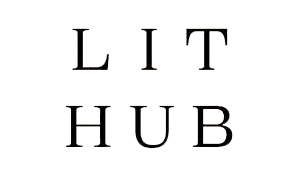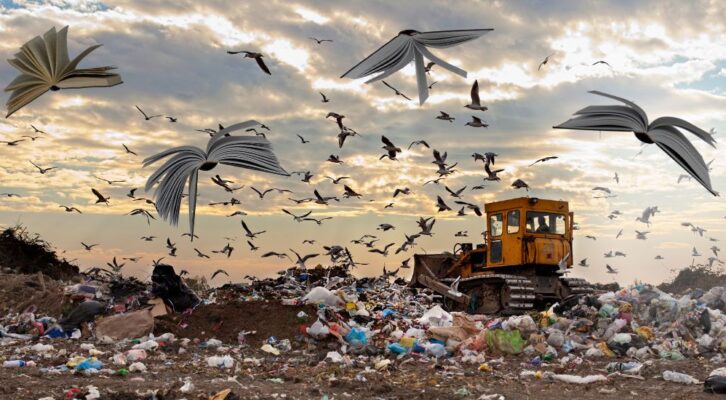
The Publishing Industry Has a Serious Waste Problem, and It Needs to Stop Now
Bookseller Lucy Kogler Has Some Ideas to Make the Book World a Lot More Sustainable
So many of us are asked about favorite lines from books. I have favorite phrases: for example, “ineluctable modality” garnered from reading Joyce’s Ulysses over 40 years ago. It seems to have relevance in regard to whatever process or system that catches my attention enabling me to think about the utility and usefulness of that system or process.
And so, the ineluctable modality of publishing a book; or, a change needs to come to antiquated systems of production and distribution to embrace and employ a real and impactful environmentally sustainable industry, reverential to all of nature.
For years I have been wrestling with and writing about the question—what should sustainability in publishing look like? I know how it shouldn’t look, and I am including the damning pictures to illustrate my concerns.
I continue to be increasingly angered by the amounts of plastic, crinkled-colored paper, and tchotchkes being sent by publishers: items that contribute to the over-abundance of unrecyclable materials destined for landfills. This crap has no intrinsic value—it is illusory “added value.” By means of all things social media people are conditioned to rely on virtual visuality to “tell” a story. Swag—the virtual actualized as junk—has become an unsustainable component and an unnecessary product connected to books.
The publishing industry is willing to embrace the disruptive power of AI, an anti-sentient pretender that uses an inordinate number of natural resources—water and mined minerals—produces large amounts of electric waste, and will induce job loss for writers and designers. Yet, the self-same industry remains infuriatingly unwilling to make the sustainable changes that can and must be made in the production and distribution of books.
A glaringly obvious change whose implementation would save continued destruction of forests would be to use hemp, or as suggested at Frankfurt Bookfair, sugarcane paper. I would also ask publishers to consider using fabric as an alternative. The sheer tonnage of fast fashion that ends up in Chile, sent via cargo ship only to end up as mountains of refuse, is aching to be idealized into an alternate source of paper.
The (slow) progress being made in relation to equity and equality can’t be the only critical change in corporate publishing.
In addition to using alternative paper sources non-toxic ink substitutes must be utilized. Production of books in China, most frequently art books and children’s books, needs to be brought home, or at least shifted to places where labor isn’t exploited, where the environment isn’t degraded, and where oppression of any people or group within said country isn’t occurring. China should not even be a consideration.
A recent children’s book (which I won’t name) illustrated the production of books in a country other than this one; a subtle form of propaganda aimed at normalizing outsourced production. Books like these are not in the best interest of saving the environment. Do we want our kids to think that assembly line workers in an unknown location, loading pallets of books, to be loaded into shipping containers and then onto a ship along with other commodities, traveling great distances to end up in a local bookstore, is how books arrive on bookshelves?
Next: dust jackets are the most inefficient way of presenting a book. A colossal waste of material goes into the production of dust jackets which account for at least 70 percent (based on my experience) of damage to books. Once the jacket is ripped, bent, dirty, the book is not sellable—especially at current price points. Imprinting the cover design on the book would solve the problem. Human book designers would not lose work because the book itself would present as art, and the abandoning of glossy/plasticized covers would save an enormous amount of paper and contribute less plastic to landfills. Children’s picture books absolutely should be without dust jackets. Don’t we want little fingers and hands to be able to grab books without concern for its cover? How has this simple fix been ignored for decades?
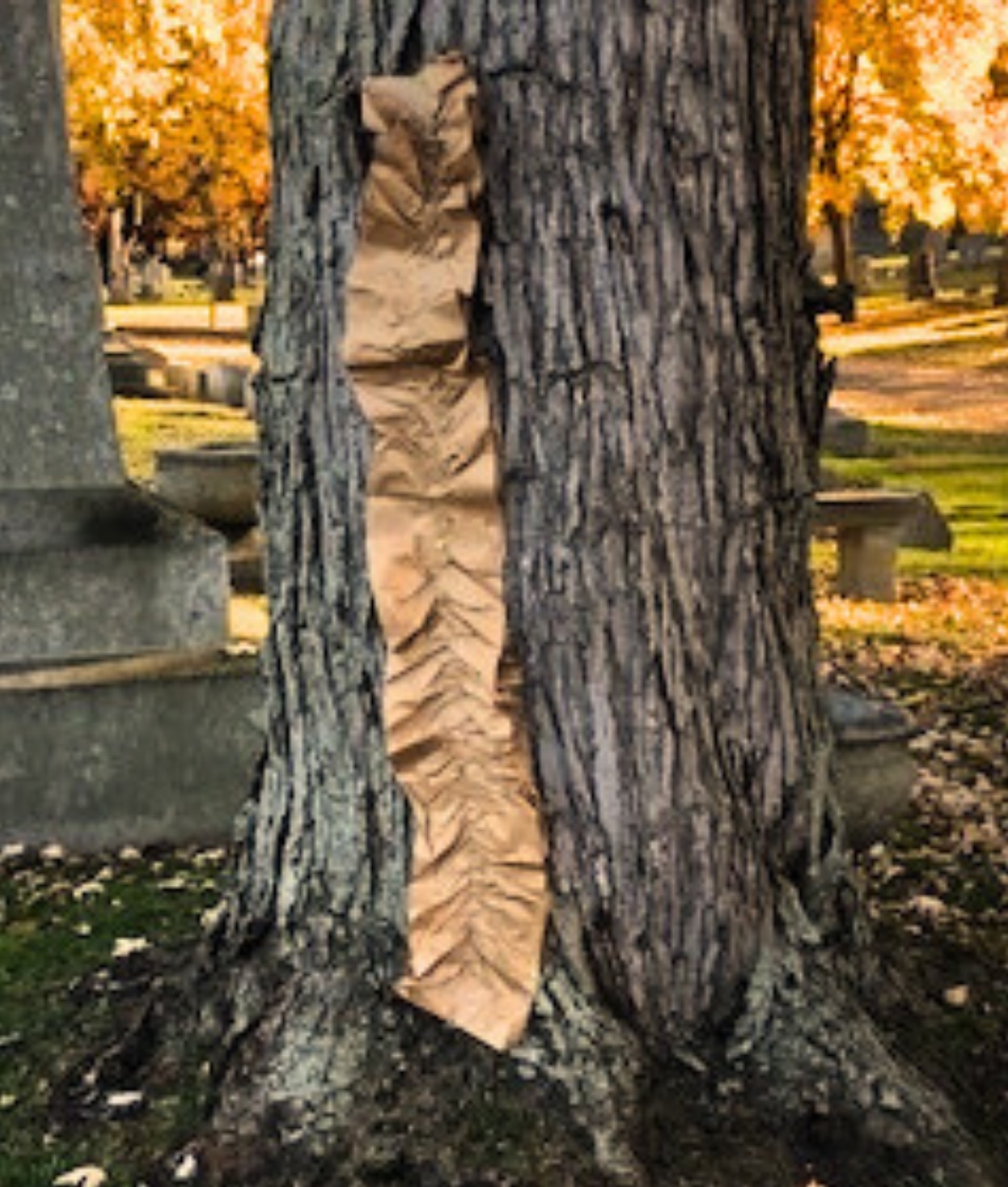
(In this first picture, above, I have gently tacked a piece of paper packing material used by publishers to a living tree. It appears as vertebrae and is meant to elicit a sense that the tree is a living entity with rights. We must save old growth forests.)
Next: the packing of books in boxes. This is the system that is the most broken, and I believe, the most readily fixable. Eliminating dust jackets is a considerable component in how books survive the packing and shipping process.
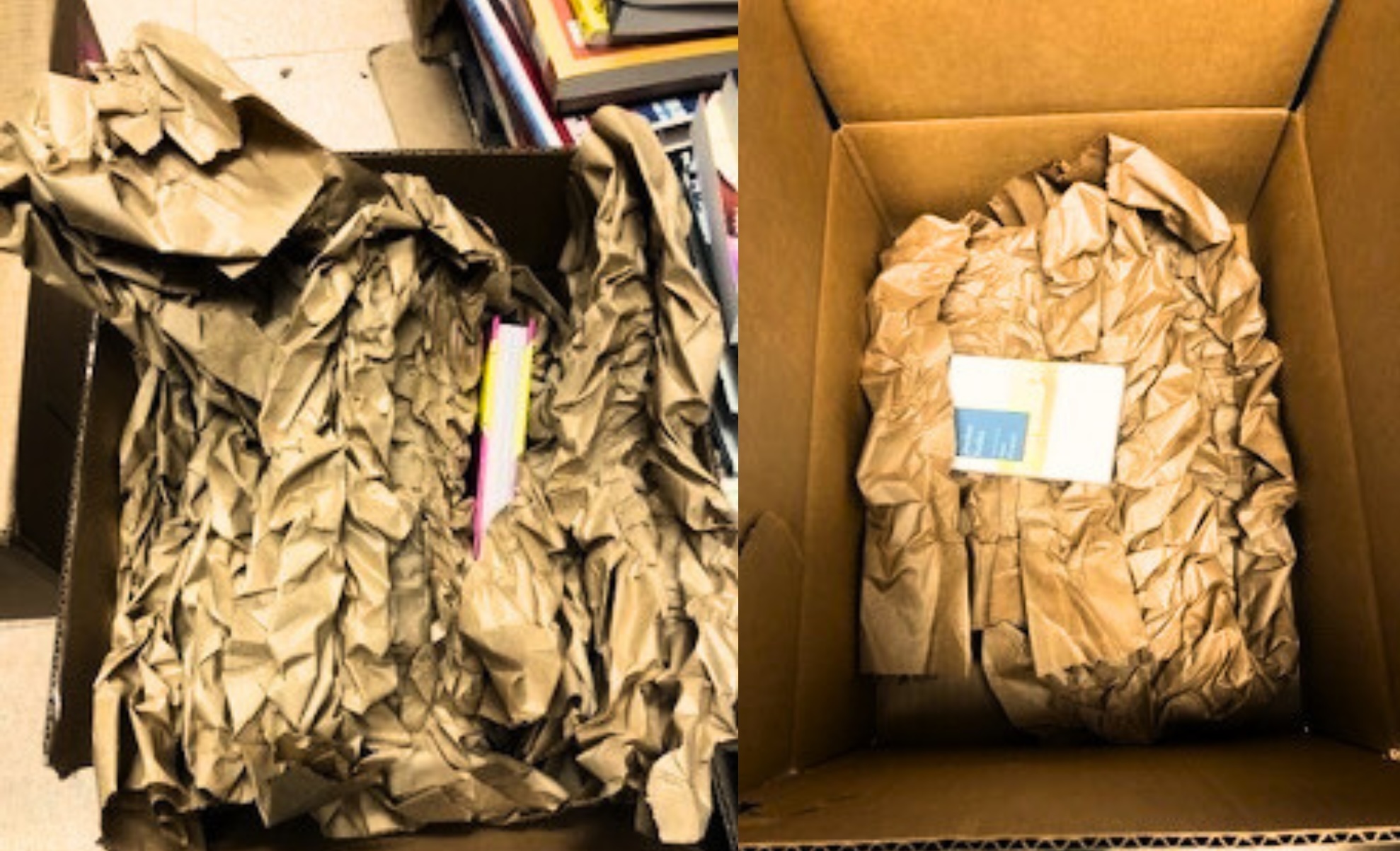
(The pictures above show how much paper is being used per package, how often a box that is not full is filled with paper and a second box is sent with one book and enough paper to keep a fire going for a nice campfire.)
The inefficiencies of the warehouse systems need to be addressed and changed. Every one of the Big 5 publishers shares these inefficiencies. When one box would suffice, often a second box with one book will be sent. This is a warehouse issue. A system that allows for the picking of books, the packing of boxes, and shipping needs to include a policy that allows for completion of these tasks with the outcome being less paper used, less plastic used, fewer boxes used, less postage, resulting in an enormous rescuing of resources and a smaller environmental footprint. Use the dollars saved from marketing to hire worker-positive system changes, and increase salaries.
The brown paper used in abundance as packing is wasteful and extremely hard to deal with. It is bulky, stiff, and difficult to recycle, taking up an inordinate amount of space even when compacted by stomping. Why not, until something better comes along, use the pulped paper from the books publishers destroy?
Shredded paper would conform to the shape of the objects in the boxes instead of just covering the top of them leaving them to slide around underneath and become damaged. (Pictures of stiff paper) Another alternative would be packing peanuts made of cellulose or hemp. Using stronger boxes and adding tape to the bottoms of glued boxes that break apart easily with more than 20 lbs of books would save on the waste of damaged books. These are simple suggestions that consider the value and importance of books as art.
These thoughts accompany a general sense that publishing needs to reinvent itself in relation to production. The (slow) progress being made in relation to equity and equality can’t be the only critical change in corporate publishing. Commitment to the health of the planet through policy and system changes is essential to the future of the book industry. The health of the environment cannot be salvaged by minor changes. Only a full commitment to the preservation and restoration of the environment will redeem an industry that is responsible for an enormous amount of waste and destruction. Production, shipping, packaging, unnecessary junk all need recalibration in order to make publishing a sustainable business.
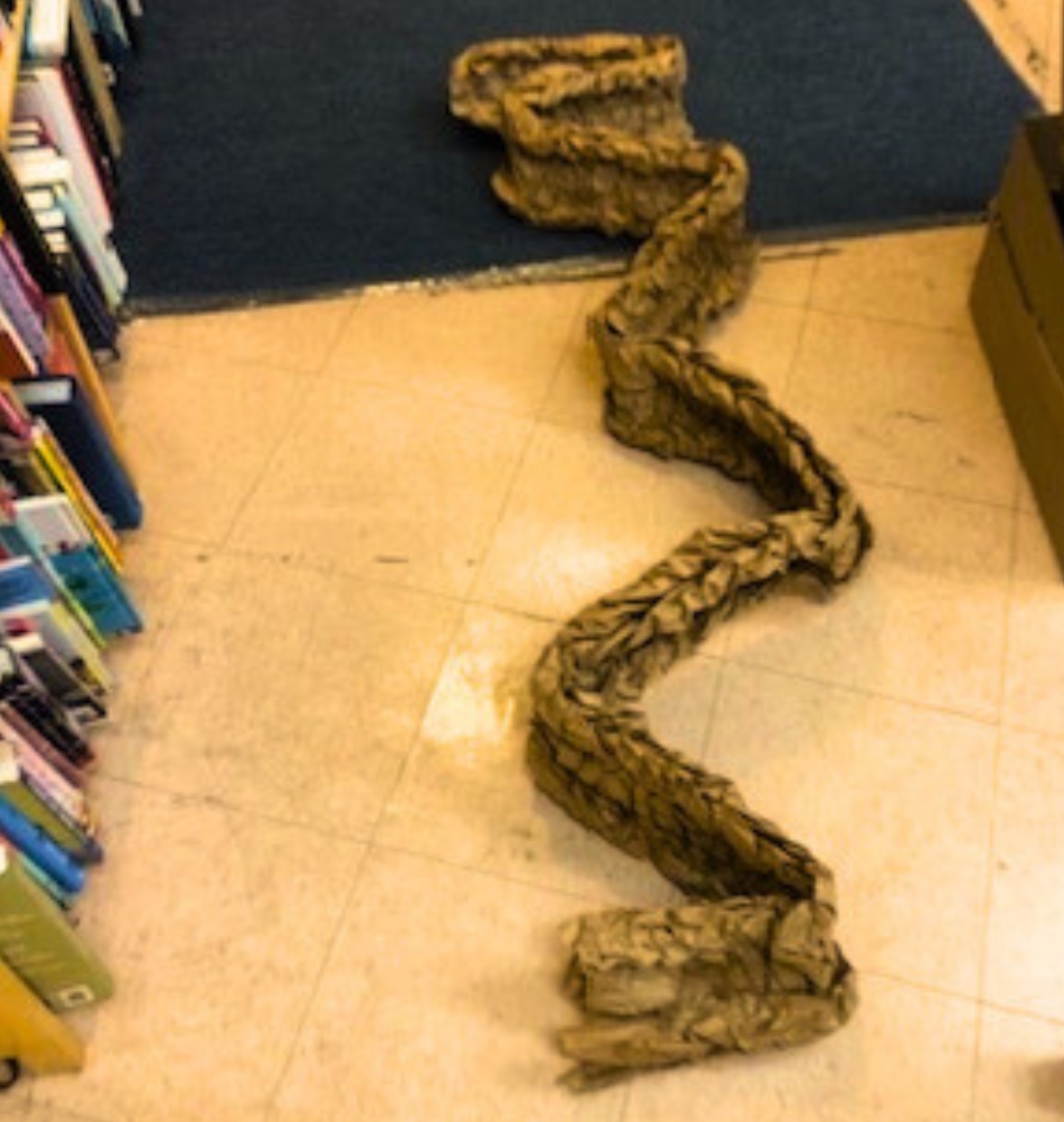
The final photo (above) is of a long single piece of packing paper. I think of it as a metaphoric equivalent of the Burmese Python that is decimating the Everglades and waterways of Florida as it moves inexorably northward. Human disregard, primacy, stupidity, and carelessness is destroying one of nature’s most diverse places. I am hoping that disregard and carelessness will not continue to be the practice of production in publishing.
Lucy Kogler
Lucy Kogler looked like her picture ten years ago and is willing to let all believe she still does. She has worked as manager for Talking Leaves... Books in Buffalo for decades. She is a contributing columnist for Lit Hub who wishes she could self-isolate on the Bruce Peninsula in Canada.








